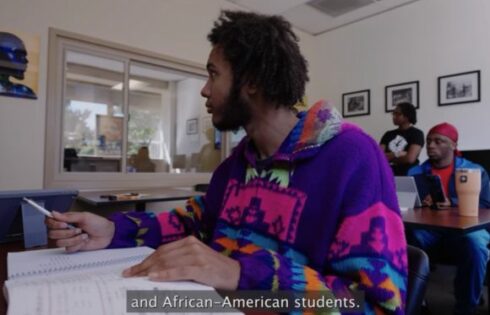A high-speed rail system in California would put thousands to work—some estimates indicate that hundreds of thousands of jobs would be created in connection with the railway. But an ever-growing price tag has turned lawmakers, voters and Stanford University against the project.
In 2008, when the ballot initiative was approved, California’s unemployment rate was just over 7 percent. A report released this month by the Employment Development Department shows an increase in unemployment to 12.4 percent.
These unemployment rates embolden supporters of the California High Speed Rail (HSR) system by providing evidence that something needs to be done to mitigate the employment regression. Jobs are being lost, and the California High-Speed Rail Authority (CHSRA), responsible for the initiative, could put the jobless back to work.
The fervor of support for the HSR project due to unemployment numbers is tempered, however, by the financial reality of the project. The estimated cost initially stood at $33 billion and has ballooned to $43 billion, which many still see as a very conservative assessment. Some experts estimate the cost to be anywhere from $80 to $100 billion, while the ballot measure initially authorized only $9 billion in high interest bonds for construction of the railway.
Even with the additional $2.25 billion in federal stimulus funding promised for the project, the likelihood that funds will come near an amount covering total construction costs—not to mention maintenance costs for the largest and most expensive transportation system in the country—is low.
Now, the sustainability of the HSR project is coming into question. Alain Enthoven, a professor emeritus in the Stanford Graduate School of Business, and former World Bank analyst William Grindley pointed out that “by 2009, the 70 million passengers advertised on the 2008 ballot measure had shrunk to 39.3 million riders by 2035, the train’s 15th operating year.”
As a point of comparison, Enthoven and Grindley offered the following: “The Boston-New York-Washington corridor is, by far, America’s most favorable site for high-speed rail. In 2008, eight years after inception, the combined ridership on all segments of the high-speed Acela train route was 3.4 million, about 6 percent of the population of the states it serves. If the California rail project were to achieve in 15 years what Acela attracted in eight, it might draw 6 percent of all California’s residents – about 3 million riders.”
Ridership, even according to the CHSRA, is essential to the success of the project. If fewer riders end up utilizing the HRS system, maintenance costs would have to come from somewhere. The originally quoted $50 ticket price has increased to more than $110.
Stanford and the communities around it are embroiled in the conversation regarding HSR.
In fact, the University has issued a statement attacking the project. According to the Palo Alto Online, Stanford has issued concerns about the “traffic and parking capacity for such a facility.”
Stanford, which owns large portions of the property on which the CHSRA would build through the peninsula area, has a vested economic interest in the project.
Jean McCown, the Director of Community Relations for the University, issued a letter to the CHSRA Deputy Director Dan Leavitt and other various local politicians about the University’s concerns going forward. The letter addressed Stanford’s economic interests in HSR, disclosing that the University “owns 36.2 acres of land along the rail corridor in Menlo Park and Palo Alto,” and that “these lands are leased to commercial enterprises, including two hotels, a restaurant, a Tesla automobile dealership” and other entities.
McCown concludes, “The potential loss of revenue if these parcels are heavily impacted by the HSR project could be significant.”
Many residents of Palo Alto are concerned that construction of the HSR system could damage El Palo Alto itself, the redwood from which the city derives its name, which is located along the existing CalTrain tracks.
Union Pacific Railroad filed a lawsuit against CHSRA because it owns the land upon which the CHSRA wants to build from San Francisco through Palo Alto, San Jose, and all the way to Gilroy.
Zach Tyson, an attorney with the Palo Alto-based Nova Law Group, was the lead counsel for a suit challenging CHSRA’s right to use Union Pacific’s lands in the peninsula mainland. Eminent domain laws upon which CHRSA made its argument for seizing UP’s land don’t apply, Tyson said. “The Authority is lying to the legislature and the public. They’re trying to convince everyone that they have the right to build over Union Pacific’s land, and they don’t.”
Tyson went on to say that the court dismissed CHSRA’s suit to acquire UP’s land using eminent domain law.
“It’s a disaster,” he said, “The entire project is so poorly mismanaged that we’ll hardly ever have more than a ditch in the ground.”
Kyle O’Malley is a staffwriter for the Stanford Review and a student at Stanford University. He is a contributor to the Student Free Press Association.
Like The College Fix on Facebook / Follow us on Twitter




Please join the conversation about our stories on Facebook, Twitter, Instagram, Reddit, MeWe, Rumble, Gab, Minds and Gettr.